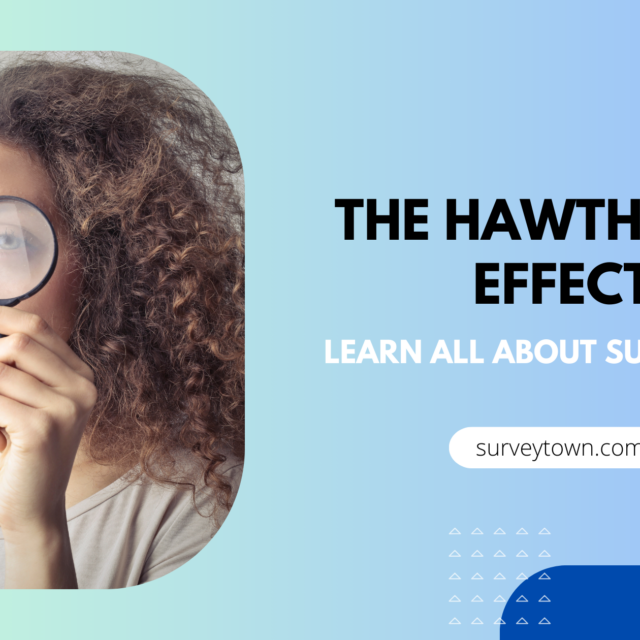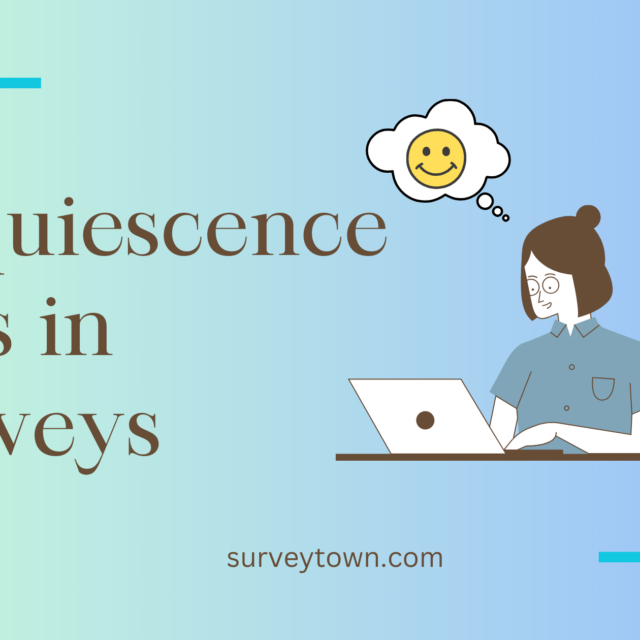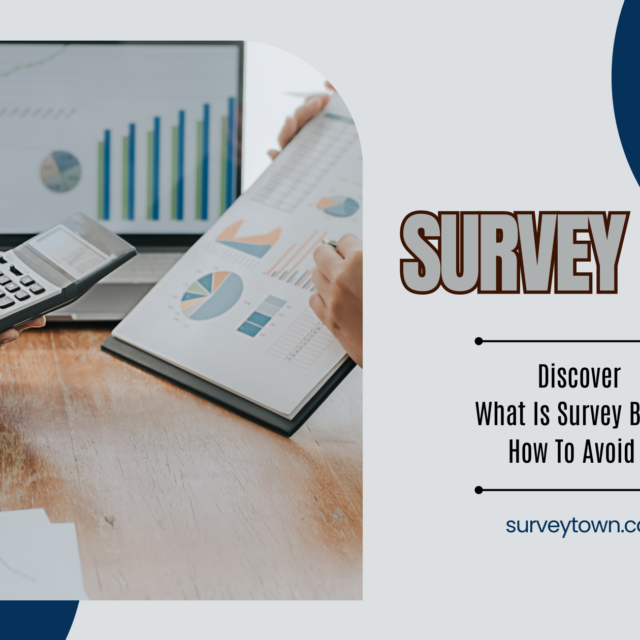Welcome to our comprehensive guide on survey bias and social desirability bias! As seasoned experts in the field of survey research, we fully understand the importance of recognizing and mitigating biases to ensure accurate and reliable survey results. In this expertly crafted guide, we will delve into the various types of biases that can impact surveys, with a specific focus on social desirability bias. By gaining a deep understanding of these biases and implementing effective strategies to address them, you can guarantee the accuracy and representativeness of your survey findings.
Click here for an in-depth article on survey biases!
Survey bias encompasses any factor that systematically distorts the outcomes of a survey, leading to inaccurate or misleading conclusions. It is absolutely crucial to identify and minimize these biases in order to obtain meaningful insights from your data and make well-informed decisions based on it. Now let’s dive deeper into social desirability bias – one of the most prevalent types of biases cited by researchers.
What Is Social Desirability Bias?
Social desirability bias is a common type of bias that occurs when respondents feel compelled to provide socially acceptable or desirable answers instead of their true thoughts or feelings. This bias stems from the pressure to conform to societal norms and the desire to present oneself in a favorable light. Understanding how social desirability bias manifests itself is essential for conducting unbiased research.
For example, imagine conducting a survey on healthy eating habits. Respondents may feel inclined to overstate their consumption of fruits and vegetables while underreporting their intake of unhealthy foods. This desire to appear health-conscious can lead to inaccurate data and skewed results.
Social desirability bias can significantly distort survey findings, especially in studies involving sensitive topics such as drug use, prejudice, or socially undesirable behaviors. Respondents may underreport these behaviors due to fear of judgment or stigma associated with them.
It is important to be aware of social desirability bias and take steps to minimize its impact on your survey results.
Identifying and Minimizing Social Desirability Bias
As expert researchers, we emphasize the importance of recognizing and addressing social desirability bias in order to obtain reliable data.
One effective way to reduce the influence of social desirability bias is through careful question design and sampling techniques. By crafting questions that minimize potential biases and using non-leading language, you can encourage more honest responses from participants. Additionally, employing diverse sampling methods helps ensure representation across different demographics and reduces the risk of biased results.
To further enhance your research validity regarding social desirability bias reduction strategies mentioned above by providing concrete examples: For instance:
- You could include open-ended questions that allow respondents more freedom in expressing their thoughts.
- Utilize anonymous surveys or online platforms where individuals feel less pressured by external judgment.
- Incorporate follow-up questions that probe deeper into respondents’ motivations and beliefs, allowing for a more comprehensive understanding of their true thoughts.
By recognizing its presence and implementing strategies to minimize its impact, you can obtain more accurate and reliable data. Here are some additional expert strategies:
- Pre-test your surveys: Before launching your survey to the target population, conduct a pre-test with a small group resembling your intended respondents. This allows you to identify potential biases early on and make necessary adjustments to the survey questions or design.
- Use indirect questioning techniques: When dealing with sensitive topics, it is important to approach them indirectly to reduce the pressure on respondents to provide socially desirable answers. For example, instead of asking directly about drug use, you can ask about perceptions of drug use in the community or the impact of drug use on society.
- Incorporate reverse-coded items: Including reverse-coded items in your survey can help detect social desirability bias. These items require respondents to provide answers opposite to what they might typically desire. By comparing responses to these reverse-coded items with other survey responses, you can identify potential bias.
By implementing these strategies, you can minimize the impact of social desirability bias on your survey results and obtain more accurate data.

Tools and Services To Combat Social Desirability Bias
Fortunately, there are various tools and services available to help you identify and reduce social desirability bias in your surveys. Here are some options:
- Advanced survey analysis software: Utilize advanced survey analysis software that can analyze data and identify potential biases, including social desirability bias. These tools can provide valuable insights and help you interpret your survey results more effectively. By utilizing the advanced features of the software, you can create dynamic questionnaires with randomized response options, reducing the likelihood of respondents simply selecting socially desirable answers. Additionally, you can incorporate open-ended questions to allow participants to express their thoughts freely without feeling constrained by predefined choices. Once data collection is complete, the survey analysis software will generate comprehensive reports that highlight any potential biases present in your responses. Armed with this knowledge, you can confidently interpret your findings and make informed decisions based on accurate data.
- Engaging third-party survey panels: Collaborate with third-party survey panels to gather diverse perspectives and reduce the likelihood of biased responses. By reaching out to a broader audience, you can obtain more representative data and mitigate the impact of social desirability bias. Expanding your respondent pool through collaboration with third-party panels also creates an environment where participants feel more comfortable expressing their honest thoughts and opinions. The inclusion of diverse perspectives helps counteract any potential biases that may arise from social desirability tendencies.
- Seek expert consultation: If you find yourself uncertain about how to effectively address bias in your surveys, we highly recommend seeking expert consultation from professionals specializing in survey design and analysis. These experts possess a wealth of knowledge and experience that can provide invaluable advice and guidance tailored specifically to your research objectives. By consulting with these professionals, you can gain insights on how to avoid biases that may arise during the survey process. They can help you understand the different types of biases that exist, such as social desirability bias or response bias, and provide strategies for reducing their impact on your survey results.
- Participate in training programs: Improve your expertise in survey design and analysis through engaging in specialized training programs that focus on identifying and mitigating biases. These programs provide you with invaluable knowledge and techniques to enhance the quality of your research. By participating in these training programs, you will learn how to avoid common pitfalls associated with bias in surveys. Furthermore, these programs offer practical examples and case studies that illustrate real-world scenarios where biases have affected survey outcomes. This hands-on approach allows you to develop a deeper understanding of the challenges researchers face when designing unbiased surveys.
By utilizing these tools and services, you can improve the quality of your research by reducing the influence of social desirability bias on your survey results.
Real-Life Examples of Social Desirability Bias
To better understand how social desirability bias manifests in real-life situations, let’s explore some examples:
- Health-Related Surveys: When asked about their exercise habits or dietary choices, respondents may feel compelled to overstate their level of physical activity or healthy eating habits due to societal pressure. They might want to avoid being perceived as lazy or unhealthy by others.
- Sensitive Topics: Surveys on sensitive topics like drug use, sexual behavior, or illegal activities often elicit biased responses influenced by social desirability concerns. Respondents may be hesitant to admit engaging in stigmatized behaviors and instead provide socially acceptable answers.
- Job Interviews: In face-to-face job interviews where candidates are asked about their weaknesses or past mistakes, there is a strong likelihood for respondents to downplay negative aspects and emphasize positive attributes in order to present themselves favorably.
- Political Polls: During political surveys conducted before elections, respondents may alter their true opinions based on what they perceive as more socially desirable positions within their community. This can lead to inaccurate predictions and misrepresentation of public sentiment.
- Consumer Research: When evaluating products or services through surveys, consumers might feel inclined to give positive feedback even if they had negative experiences with them because they don’t want others’ opinions influenced negatively by theirs.
These examples illustrate how social desirability bias can influence survey responses across different contexts and subject matters. It is crucial for researchers and survey designers alike to be aware of this bias when formulating questions and interpreting data.
You can reduce the impact of social desirability bias by employing several strategies. For instance, using anonymous surveys or ensuring confidentiality can encourage respondents to provide more honest answers. Employing indirect questioning techniques that indirectly assess behaviors rather than directly asking about them can also help mitigate this bias.
Other Survey Biases You Should Know About
It is crucial to be aware of survey biases as they can significantly impact the accuracy and reliability of your research findings.
- One prevalent type of bias is social desirability bias. This occurs when respondents tend to answer questions in a way that portrays them favorably or aligns with societal norms. For example, individuals may avoid admitting certain behaviors or beliefs due to fear of judgment or consequences. To minimize social desirability bias, it is important to create a safe and anonymous environment for respondents where they feel comfortable expressing their true thoughts and opinions.
- Another common bias is response bias. This refers to the tendency for participants to provide answers that are not entirely accurate or truthful. Response bias can occur due to factors such as memory limitations, misunderstanding questions, or simply wanting to please the researcher.
- Sampling bias is yet another critical consideration when conducting surveys. Sampling bias occurs when the selected sample does not accurately represent the target population being studied. For instance, if you only survey individuals from a specific age group or geographic location without considering other demographics present in your target population, your results may be skewed and not generalize well beyond that particular group.
- It is also important to be mindful of non-response bias. This occurs when certain individuals choose not to participate in the survey, leading to a potential distortion in the results. To mitigate non-response bias, it is crucial to encourage participation and provide incentives if appropriate. Additionally, analyzing the characteristics of respondents and non-respondents can help identify any potential biases introduced by those who chose not to participate.
- Lastly, self-selection bias should be taken into account. This type of bias arises when participants voluntarily decide whether or not they want to take part in the survey. Self-selection can introduce biases, as those who choose to respond may have different characteristics or opinions compared to those who do not participate. While it may be challenging to completely eliminate self-selection bias, being transparent about your research objectives and ensuring clear communication with potential respondents can help minimize its impact.
In summary, understanding and addressing survey biases are essential for obtaining accurate and reliable research findings. Remember: A well-designed survey that accounts for these various types of biases will yield more robust data that truly reflects the attitudes and behaviors of your target population.
Conclusion
Recognizing and addressing social desirability bias is crucial for obtaining accurate and reliable survey results. It’s crucial to understand this bias and implement effective strategies to ensure unbiased data collection that truly represents your target population. Minimizing bias requires continuous effort and staying informed about the latest developments in survey methodology. By regularly updating your approach and considering new techniques or tools, you can improve the quality of your research and enhance the validity and reliability of your findings.
Let us provide you with some examples of how social desirability biases can impact survey responses. People may have a tendency to respond in a way that they believe is socially acceptable or desirable rather than providing honest answers. This can be influenced by factors such as self-presentation concerns, fear of judgment, or wanting to please others.
To reduce these biases, it’s important to create a safe and anonymous environment for respondents where they feel comfortable expressing their true opinions. Using non-leading questions that are clear, concise, and free from any potential influence can also help elicit more genuine responses.
Additionally, employing various types of sampling methods can further minimize biases. Random sampling ensures that every member of the target population has an equal chance of being selected for participation. Stratified sampling allows for representation across different subgroups within the population based on specific characteristics or variables. It’s worth noting that even with these precautions in place, some level of bias may still exist due to inherent limitations in surveys themselves.
However, by acknowledging these potential biases upfront when analyzing survey results, researchers can make more informed decisions based on a comprehensive understanding of both strengths and limitations.
In conclusion, recognizing social desirability bias is essential for conducting accurate surveys. By implementing appropriate strategies like creating a safe environment for respondents and using diverse sampling methods while continuously updating your approach based on advancements in survey methodology – you will obtain high-quality data leading to impactful research outcomes.







